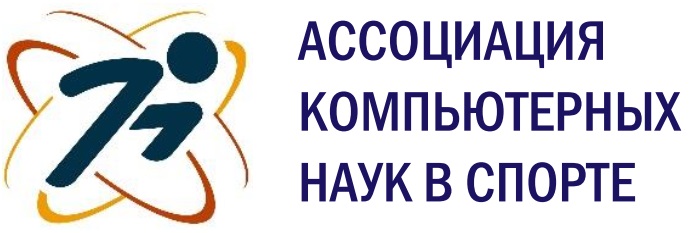from 01.01.2020 to 01.01.2024
Moskva, Moscow, Russian Federation
VAK Russia 5.8.4
VAK Russia 1.1.10
VAK Russia 1.2.1
VAK Russia 1.2.2
VAK Russia 1.2.3
VAK Russia 1.5.2
VAK Russia 1.5.5
VAK Russia 1.5.8
VAK Russia 3.3.9
VAK Russia 3.1.33
VAK Russia 5.2.3
VAK Russia 5.2.6
VAK Russia 5.3.2
VAK Russia 5.3.4
VAK Russia 5.8.6
VAK Russia 5.8.7
VAK Russia 5.6.6
VAK Russia 5.12.1
VAK Russia 5.12.4
UDC 796.052.224
UDC 796.052.16
UDC 796.058.4
UDC 347.514.3
UDC 796.05
UDC 355.233.22
UDC 351.855.3
UDC 00
UDC 31
CSCSTI 77.31
CSCSTI 77.03
CSCSTI 77.00
CSCSTI 83.00
CSCSTI 14.00
CSCSTI 20.00
Russian Classification of Professions by Education 49.04.03
Russian Classification of Professions by Education 49.06.01
Russian Classification of Professions by Education 02.00.00
Russian Classification of Professions by Education 06.00.00
Russian Classification of Professions by Education 09.00.00
Russian Classification of Professions by Education 32.00.00
Russian Classification of Professions by Education 39.00.00
Russian Classification of Professions by Education 44.00.00
Russian Library and Bibliographic Classification 75
Russian Library and Bibliographic Classification 1
Russian Library and Bibliographic Classification 22
Russian Library and Bibliographic Classification 28
Russian Library and Bibliographic Classification 3
Russian Library and Bibliographic Classification 58
Russian Library and Bibliographic Classification 73
Russian Library and Bibliographic Classification 74
Russian Trade and Bibliographic Classification 5
Russian Trade and Bibliographic Classification 7
BISAC SPO061030 Coaching / Soccer
BISAC SPO040000 Soccer
BISAC SEL SELF-HELP
BISAC COM014000 Computer Science
BISAC COM072000 Computer Simulation
BISAC COM017000 Cybernetics
BISAC COM018000 Data Processing
BISAC COM062000 Data Modeling & Design
BISAC COM089000 Data Visualization
BISAC COM021000 Databases / General
BISAC COM021030 Databases / Data Mining
BISAC COM023000 Educational Software
BISAC COM025000 Expert Systems
BISAC COM074000 Hardware / Mobile Devices
BISAC COM080000 History
BISAC COM079010 Human-Computer Interaction (HCI)
BISAC COM032000 Information Technology
BISAC COM031000 Information Theory
BISAC COM004000 Intelligence (AI) & Semantics
BISAC COM060000 Internet / General
BISAC COM039000 Management Information Systems
BISAC COM077000 Mathematical & Statistical Software
BISAC COM051000 Programming / General
BISAC COM051300 Programming / Algorithms
BISAC COM012040 Programming / Games
BISAC COM060170 Web / Content Management Systems
In order to compare the defensive effectiveness of football teams using tactical systems with different quantitative composition of the defensive line, the defensive effectiveness of teams from five European leagues and the Russian Premier League for 8 full seasons 2014-2022 was compared on a number of indicators (goals conceded, shots allowed on their own goal, expected goals conceded) based on electronic data resource understat.com. According to statistical analysis, tactical systems with two central defenders are more defensively effective than tactical systems with three central defenders, according to the xGa indicator (expected goals conceded). Significant differences in xGa were obtained for the English Premier League, the Spanish La Liga; differences at the trend level in xGa were obtained for the French Ligue 1 and all the championships considered in general. Further research is needed, taking into account not only the type of tactical system of the team, but also the type of the opposing team and other factors affecting the defensive effectiveness of the team.
football team, tactics, defensive efficiency, tactical system
1. Timofeev A.I. On the problem of organizing the game in defense with various tactical schemes in football. Actual problems of theory and practice of physical culture, sports and tourism: Materials of the VII All-Russian scientific and practical conference of young scientists, graduate students, undergraduates and students with international participation, Kazan, April 26, 2019, Volume 2, Kazan: Volga Region State Academy of Physical Culture, Sports and Tourism, 2019. – pp. 332-333 (in Russian). EDN: https://elibrary.ru/VUHCCE
2. Shved M.A. Modern features of tactical structures and principles of professional teams / League of Researchers of the Moscow State Pedagogical University: collection of articles of the student open conference. At 4 t., Moscow, November 21-25, 2022. Volume 1, Moscow: Moscow City Pedagogical University, 2022, pp. 149-156 (in Russian). EDN: https://elibrary.ru/KIZIPR
3. Memmert D., Raabe D., Schwab S., Rein R. A tactical comparison of the 4-2-3-1 and 3-5-2 formation in soccer: A theory-oriented, experimental approach based on positional data in an 11 vs. 11 game set-up. PLoS One, 2019, 14 (1), Article e0210191. DOI: https://doi.org/10.1371/journal.pone.0210191
4. Forcher L., Forcher L., Waesche H., Jekauc D., Woll A., Altmann S. The Influence of Tactical Formation on Physical and Technical Match Performance in Male Soccer: A Systematic Review. International Journal of Sports Science and Coaching, 2022, 18 (5), pp. 1820-1849. DOI: https://doi.org/10.1371/journal.pone.0265501
5. Zhukov M.N., Osetrov I.A., Mikhailov P.V., Alayev S.V. Statistical methods for competition activity evaluation in football. Vestnik sportivnoy nauki [Sports Science Bulletin], 2012, 4, pp. 6-9 (in Russian). EDN: https://elibrary.ru/RRTXSZ
6. Titovets S.V., Labzo S.A. Modern technologies for determining the effectiveness of competitive activity in football. Promising directions in the field of physical culture, sports and tourism: Materials of the VIII All-Russian scientific and practical conference with international participation, Nizhnevartovsk, March 23-24, 2018. Nizhnevartovsk: Nizhnevartovsk State University, 2018, pp. 530-532 (in Russian). EDN: https://elibrary.ru/XYWRAl
7. Moldagereev M.M. X-guide to football analytics. Vestnik Moskovskoy mezhdunarodnoy akademii [Bulletin of the Moscow International Academy], 2019 (2), pp. 54-63 (in Russian). EDN: https://elibrary.ru/MGGFRM
8. Mead J., O’Hare A., McMenemy P. Expected goals in football: Improving model performance and demonstrating value. PLoS One, 2023, 18 (4), Article e0282295. DOI: https://doi.org/10.1371/journal.pone.0282295
9. Umami I., Gautama D.H., Hatta H.R. Implementing the Expected Goal (xG) model to predict scores in soccer matches. International Journal of Informatics and Information System, 2021, 4 (1), pp. 38-54. DOI: https://doi.org/10.47738/ijiis.v4i1.76












